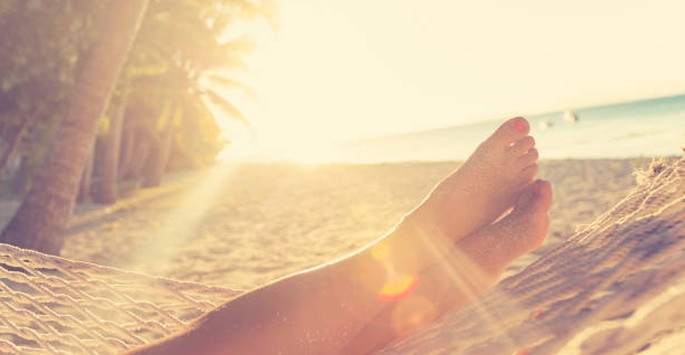
No matter what you may hear about tanning, whether it's in the sun or in a tanning salon, this unhealthy practice is putting you at risk for a host of skin conditions that range from irritatingly benign premature aging to dangerously malignant skin cancers.
Most of us are not strangers to the occasional tan or sunburn, particularly if you live in South Florida. From an early age we've heard misconceptions about tanning such as base tans being healthy for you, tanning beds referred to as the "safe sun", and waterproof sunscreens that allow us to swim all day long without worry (or re-application). The reality of tanning is far more perilous than most of us have been led to believe. And when we examine our patient statistics and discover that 80-90% of our medical practice patients visit us for skin checks and skin cancer related issues, many people remain unaware of the harsh reality of tanning.
Tanning Beds are NOT the "Safe Sun"
Using a tanning bed was long considered the safest way to get a tan, with many users believing it delivered a healthy dose of vitamin D without the dangers of skin damage. Tanning beds mostly emit UVA rays with small amounts using UVB, and many considered the former type safer because UVAs weren't believed to cause anything more than superficial damage. However, UVA rays been determined to penetrate much deeper than UVB rays, causing abnormalities that lead to melanoma, the deadliest form of skin cancer.
The Myth of the Base Tan
We have previously discussed how this myth can be unhealthy, particularly because it sends the message that any additional tanning is somehow safe thanks to this "protective base coat". The truth is, any additional burning or tanning that you inflict on skin that has already been exposed to UV damage (and yes, any color, whether it's a burn or a tan is still damage) only serves to wound your skin to the point where permanent DNA damage may occur. Any discoloration in your skin should be treated the same way any other bodily injury would be treated—by protecting, soothing, and covering it so that it may heal properly.
Shocking Statistics
According to the Skin Cancer Foundation, use of a tanning bed before the age of 35 increases risk of melanoma by 75%, and occasional use triples your chances. Further, according to melanoma.org, melanoma is the most common form of cancer for young adults 25-29 years old and the second most common form of cancer for young people 15-29 years old. Melanoma is the leading cause of cancer death in women 25-30 years old and the second leading cause of cancer death in women 30-35 years old. With nearly 50% of Americans that live to age 65 getting skin cancer at least once in their lifetime, the odds only climb if we neglect sun protection as we age. One particularly sobering statistic from the Skin Cancer Foundation cites that one person dies from melanoma every hour.
Is there any hope for a tan?
Yes! While any tan acquired through UV exposure should be considered off limits, there are countless new options for faux tanning that have been developed over the past two decades that no longer contain the garish orange tones that were previously associated with bottled tanning solutions. Many brands offer at-home sprays that provide a natural faux glow, and spray tanning salons are now able to apply shades tailored to your liking that offer a healthy, glowing appearance. Just be sure to use a salon that is well ventilated if you choose to spray tan instead of using a topical solution.
For additional information on our available sunscreens, please visit our resource guide here to see what options are available for protecting your skin from ultraviolet rays. Avoiding sunlight from 10am-4pm, covering up with your clothing, taking advantage of shade, and layering up on the sunscreen will help you keep your skin healthy and youthful for years to come.
Get Expert Skincare Advice
Schedule an appointment for a facial with us, and get expert tips and
recommendations that will work best for your skin type.

